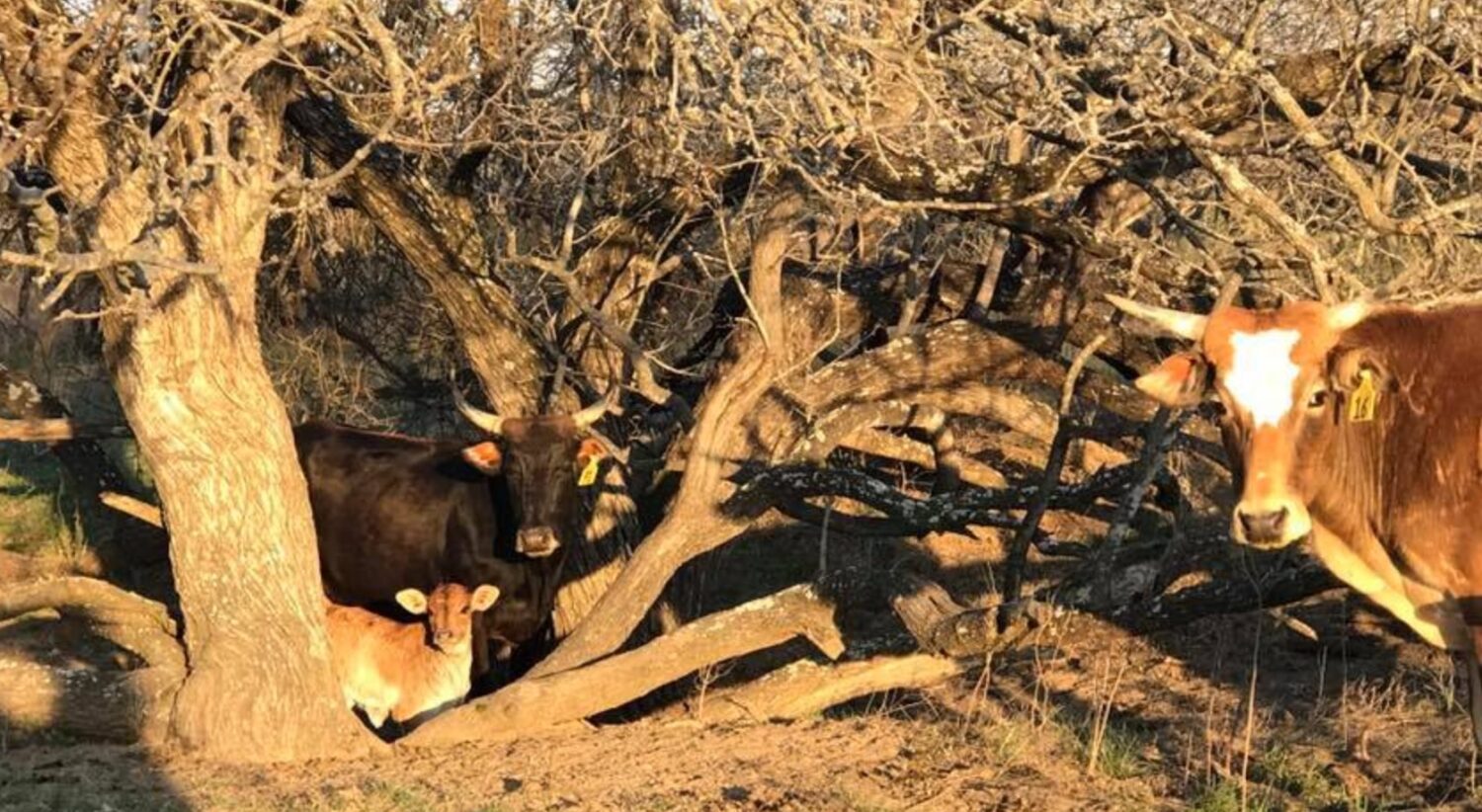Featured image above: Travis Eckroth Calves

October 15, 2018
Terry Lidral in collaboration with Elizabeth Backes*, Ph. D., Nutritionist with Purina Mills
Your calves are the product of your program. All the planning, the hard work, the monetary cost and the personal investment in getting a calf on the ground with your brand makes that little animal a valuable commodity. When the calf is born, we depend on the mama cow to give her baby a good start.
But when it’s time to wean the calf off from its mama, the responsibility to its well-being shifts to us. With some planning and preparation for the weaning process, we can provide the necessary elements to give the calf the best chance at growing up strong and healthy.
One of the major factors in successful weaning is to transition the calf from mama’s milk to a solid food source that will sustain its growth needs. Calves, on average, are weaned from the cow on average at 205 days. Timing of weaning can be impacted by various reasons, such as calf age, forage resources, and cow body condition score. .
Getting the calf on feed quickly post-weaning will help to avoid sickness. At weaning, calves experience various stressors that can lower their ability to resist disease. Stress frequently causes a calf to bawl for its mother. After an extended period of time, persistent bawling can create throat irritation that sometimes leads to respiratory disease. Weaning typically happens using two methods – drylot and fenceline weaning. Fenceline weaning has been reported to positively impact the weaning phase, but either weaning method needs the proper resources available at the ranch or farm.

A properly prepared area can go a long way in encouraging newly separated animals to begin to eat and drink sooner rather than later. A calf that gets a good start on feed within the first 10 to 14 days of the weaning process is more apt to ward off health issues. If automatic waterers are unfamiliar, there should be a separate water tank available as well. Placing feed and water sources perpendicular to the fence line puts them in the path of the calves as they pace the fence making them easy to find. In warmer weather, shade is important to prevent heat stress. Vaccinations help to stave off illness and deworming before weaning rids the calves of parasites that rob them of the nutrients they should be getting from their feed. Do not overcrowd and make sure there is enough hay feeder space for the number of calves in the enclosure.
A calf at weaning needs a quality starter feed that is well balanced for protein, energy, and macro and micro trace minerals. It is very important that the starter feed be in a palatable form so that the calf will be enticed to eat upon finding it and return later for more.
Lick tubs placed in the calf pen can be a source of free-choice supplement. Plus, the licking action produces saliva which helps buffer the rumen. Licking at the tub also can stimulate thirst and appetite and can motivate the calf to go in search of food and water.
Calf weaning can take from 21 to 28 days to complete on an average. The main goal should be the calf’s success with consistently eating and drinking the required amount to promote proper weight gain and physical development.
Calves never get over a bad start – or a good one. A calf that gets sick in the weaning phase never really catches up with its counter-parts who got a good healthy start. A successful weaning program will go a long way in setting up the calf to handle the post weaning phases of development. We know that if we can get them on a feed program quickly, we can help give them a better chance to avoid the sickness.
*Elizabeth Backes is a Purina Cattle Animal Nutritionist working at Purina Mills. She graduated with a bachelor’s degree in Agriculture with an emphasis in Animal Science from Lincoln University. She continued her education at the University of Arkansas, receiving her master’s degree in Animal Science with an emphasis in ruminant nutrition . Backes pursued her Ph.D. in cow/calf parasitology from the University of Arkansas evaluating various commercial anthelmintics in cow/calf production.Growing up on a small cow/calf operation in Saint Thomas, MO, Backes learned to appreciate animal agriculture and developed her interest in a career in the cattle industry. She is passionate about agriculture and the impacts nutrition has on reproduction and health. Her work with Purina will help contribute to the technical side of the cattle industry and provide cattle producers the knowledge they need to provide optimal nutrition to their animals.


